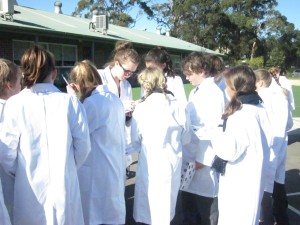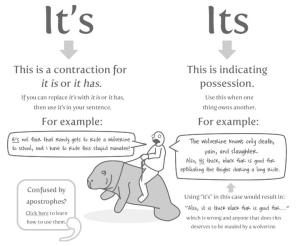Remember the days when you used to imagine you were a firefighter? Ever noticed that it seems okay to take a risk in a game and fail than it does to take a risk at school and make a mistake?
Well, throughout the last few weeks in the Zone, we have not been working in our classrooms; we have been working in The Ministry of Science (MoS). The MoS is an imaginary system of laboratories that employs Specimen Processors, Lab Technicians, Chemists, Biologists, doctors and Professors… all of whom are actually Stage 3 students. The teachers have morphed into Professors themselves and sit on the MoS Board of Directors.
After donning their lab coats, MoS employees complete tasks from the MoS Matrix (combines the areas of science with an adaptation of Blooms) in order to earn DNA. This DNA is crucial for staying employed at the MoS – slip below the required amount and your are demoted or fired. On the other hand, if you earn extra DNA you may apply to the Board of Directors for a promotion. In addition to earning DNA, employees must purchase imaginary equipment that they require to perform their duties (ie. pipets). Employees are taxed each week and they have the opportunity to improve their work life with ‘chance’ cards. One student commented “It’s just like the real ‘Game of Life!'”

Today was especially fun. A couple of ‘specimen processors’ were ready to move up to the next level, ‘Lab Technician’. They stood up in front of the other employees and the board and convinced us all that they were ready to be promoted. Students told us about how many DNA they have earned, the quality of the tasks they had submitted so far, their independent learning skills and ability to stay on task. we were so impressed that they were all promoted.
Here’s an interesting aspect – employees earn more DNA according to their employment level. Lab Technicians earn more than Specimen Processors for the same task, just like in the workforce. Employees also earn more DNA or the quality of their task. We use a rubric that employees self-assess with and then they submit that to the board for marking.
Next week we will begin the ‘Explosion’ sessions. These are director-led workshops that employees sign-up to. They involve fizzing, microscopes, liquid nitrogen, etc… The students… I mean, the employees are terribly excited.
A funny story – one of our secondary science teachers was approached by a Stage 2 student in his lab coat yesterday only to be told “Hey, you can’t wear that! You don’t teach Stage 3!”




